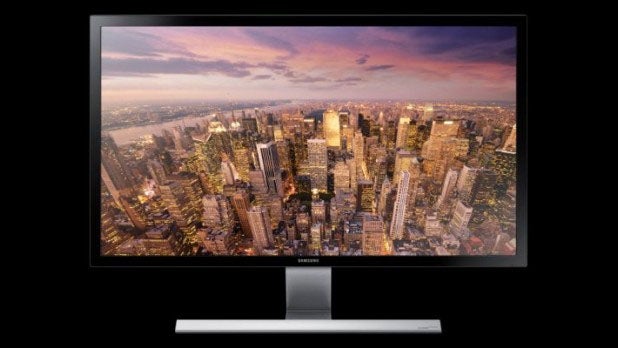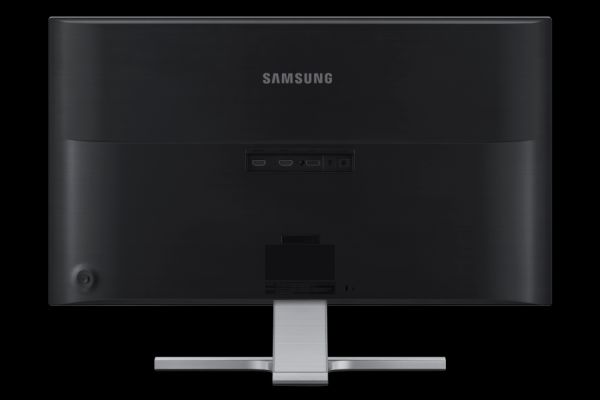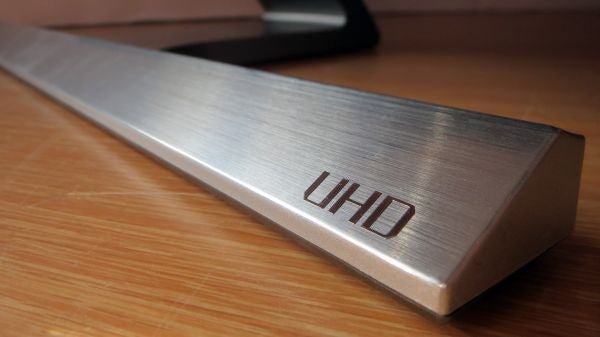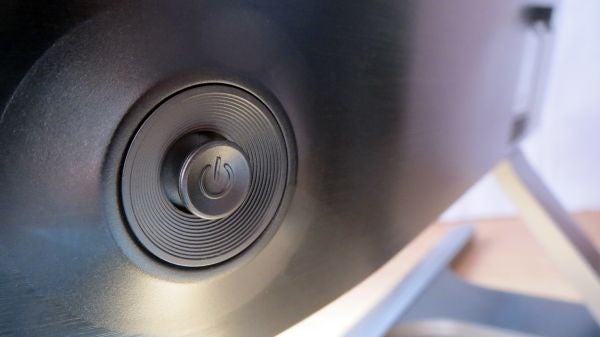Samsung U28D590D Review
Samsung U28D590D
Is Samsung's £450 4K monitor the one to buy?

Sections
- Page 1 Samsung U28D590D Review
- Page 2 Image Quality, Uniformity, Input Lag and Verdict Review
Verdict
Pros
- Solid image quality
- 60Hz over DisplayPort
- Stylish design
Cons
- Poor input lag
- No USB ports
- Lack of stand versatility
Key Specifications
- Review Price: £440.00
- 28in, 3840 x 2160
- 60Hz over DisplayPort, 30Hz over HDMI
- 1ms GTG
- 2 x HDMI 1.4
- DisplayPort 1.2a
- Headphone jack
What is the Samsung U28D590D?
The first 4K monitors were prohibitively expensive, but prices are dropping fast – so now it’s worth considering one of these high-resolution screens if you need to replace an existing 1080p panel without taking out a second mortgage.
The latest to impress is the Samsung U28D590D, which costs a reasonable £440 inc VAT. It’s a 28in screen with the standard 4K resolution of 3,840 x 2,160, and it’s designed to take on the Asus PB287Q – a £460 panel that’s also got a 28in, 4K screen.
SEE ALSO: Our pick of the Best Monitors

Samsung U28D590D: Specs and Design
The Samsung, like the Asus, is one of the new wave of affordable 4K screens, and that dictates what kind of technology is being used. The U28D590D has a TN panel, rather than IPS, and Samsung claims a slick 1ms response time – just like the Asus – making it idea for gaming.
That’s not the only area where the Samsung cribs from its rival. The port selection of a single DisplayPort 1.2a connector and two HDMI 1.4 plugs is identical to the Asus, and it raises the same issue – you’ll only be able to run 3,840 x 2,160 at 60Hz if you use DisplayPort. The HDMI connectors are restricted to 30Hz, which means they’re no good for gaming, and they don’t have MHL either.
It’s worth considering, but it’s not the end of the world – anyone who buys this screen for playing games will need a high-end graphics card that’s almost certainly going to have a DisplayPort output.

Samsung’s screen doesn’t keep up with the competition when it comes to other practical considerations. The U28D590D has barely any adjustment, with only a little bit of forward and back tilt available. The lack of versatility means there isn’t any option for horizontal swivelling, height adjustment or portrait mode – all options that were included in the Asus.
The Samsung can’t be used with a VESA mount, either, and it’s also missing a few peripheral features: there aren’t any USB ports or built-in speakers.
At least it looks better than the Asus. The aluminium stand is slim and sleek, and the panel itself is surrounded by a glossy bezel that’s made from black plastic. Its 5.65kg weight undercuts the Asus by more than two kilos, and the Samsung is 169mm from front to back – slimmer than its 220mm rival.
Samsung U28D590D: Setup
It’s an easy monitor to build. The stand clamps onto the back of the screen with good rigidity, and the base attaches with a pair of pre-installed screws.
We plugged in, attached our DisplayPort cable, and didn’t have any problems – our test machine quickly picked up the DisplayPort signal.
Samsung’s screen is designed to look smart, so it’s shoved the controls around the back – only a tiny power light intrudes on the glossy bezel. Instead of a row of buttons, the U28D590D’s menu is controlled by a single joystick that doubles as a power button.
SEE ALSO: More £200-£500 Monitors

Moving the joystick sideways opens up a quick settings menu, and tapping the button loads the full on-screen display. It’s odd, especially the first few times, but it’s helped by Samsung’s sensible menu – there aren’t any frills here, but it’s well laid-out.
Our only qualm came when we’d finally got the U28D590D out of its box and put it together. The tiny stand looks stylish, but it’s not sturdy – a tap on the top of the screen caused some serious wobble.


